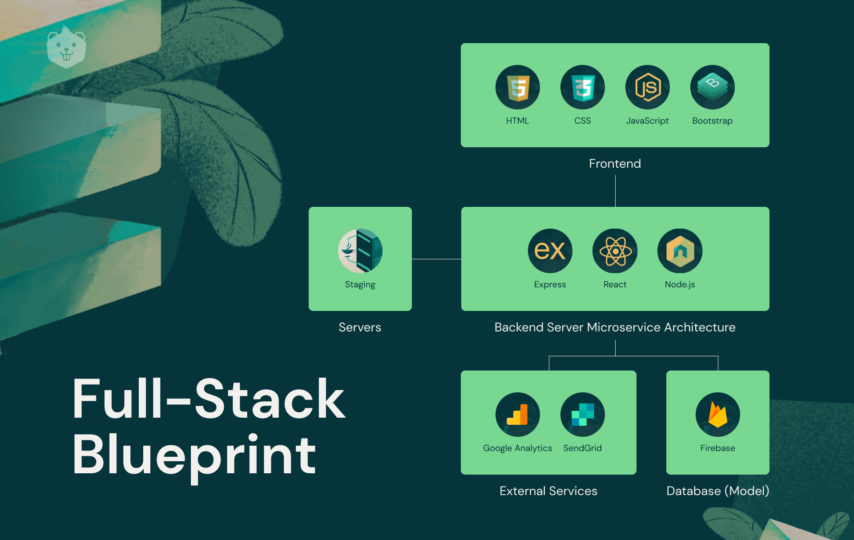Coding comes in handy for a number of IT roles, and it will continue to remain one of the most in-demand skills in this digital world. Web development is probably the ideal career field for professionals interested in programming. Every day, many websites are being launched across the world, giving you the opportunity to explore your skills and design a high-performing website. Traditionally, you must be familiar with two types of developers for a website – front-end developer and back-end developer.
Tips for Choosing the Best Full Stack
A front-end developer works on the client-side part of the website and designs everything the user interacts with on a web page visible to them. On the other hand, a back-end developer works on the server-side of the website and builds the technologies that support the front-end elements like scripting, databases, or architecture of the website. These days you will come across a new type of role, namely full-stack developer. This designation is given to a professional who works with both the front-end and back-end sides of web development. It means he knows how to use HTML, CSS, and JavaScript for the client-side as well as Python, Java, SQL, Node.js for the server-side of web development.
Reading the above statement, you may usually end up thinking that full-stack developers must have expertise in all the tools, frameworks, and technologies used in both sides of web development. However, it is not so. Though they are familiar with all the technologies and frameworks used throughout the software development lifecycle, they have expertise in a particular technology stack. This means a project generally involves a specific stack of technologies for building an application. MEAN Stack is the best example you can think of, in this case. Here’s how MEAN Stack works for end-to-end application development:
Developer Course
M – MongoDB (database used for the application)
E – Express.js (server-side web framework)
A – Angular (front-end JavaScript framework)
N – Node.js (back-end runtime environment)
This stack is popular for the faster development and deployment of web applications. No wonder people are interested in learning more about this stack and taking a MEAN Stack Course in Bangalore, Hyderabad, Pune, Chennai, and other IT dominant locations.
Now you may say that there are hundreds of courses available over the internet regarding MEAN stack development and how should one go about selecting the best course that aligns with their career needs. So, in this article, we have discussed five important tips that can help you identify the best course among the available options online. Read on to know more!
Five Tips to Choose the Best Full Stack (MEAN) Developer Course
Here are the five tips you can follow.
1. Be specific when you search for a MEAN Stack course.
The above sections have made it clear that full-stack is a general and broad term that encompasses different technology stacks to choose from, including MEAN stack. So, when you start searching for a course, be specific in your query. Do not mention the term full-stack only; you may end up finding courses that do not deal with MEAN particularly. A good course should first explain full-stack development and then cover all the key technologies involved in MEAN.
2. Compare the syllabus of different courses.
This is one of the best ways to filter out redundant courses from the good ones. When you check out the syllabus, ensure that all the topics are covered thoroughly and not just briefly. In other words, a course having 20-hours of on-demand video modules would be definitely better than a course with 5 hours of content. Reputed training providers mention the detailed syllabus along with the time duration for each section. When it comes to topics, a good course should cover concepts like web development basics, using front-end and back-end frameworks for building websites, creating dynamic websites, Agile methodology, testing the website, apart from explaining MongoDB, Express.js, Angular, and Node.js in detail.
3. Practical knowledge is important.
This is again a smart trick to filter out the good courses quickly. Several courses would only give you theoretical knowledge of MEAN Stack web development. However, your learning is incomplete until you know how to apply those skills and build a website on your own successfully. So, go for a course that includes some industry projects or a capstone project at the end. When you get to apply those skills, you will come across actual challenges that creep in when designing a website from scratch.
4. Certification and accreditation
The next step is to check out whether a course meets the basic learning standards or not. You can prefer enrolling in a course that is accredited by a renowned university or made in partnership with an established software company. Though it is not compulsory, accredited courses have high-quality course material compared to others. Additionally, check out if the training provider offers a certificate or not. A course completion certificate is often useful when you want to demonstrate your full-stack development skills to prospective employers via professional networking sites like LinkedIn.
5. Course fee
This tip is important for those who are considering financial factors also when selecting a course. Though you may be instantly lured into a free MEAN stack course, it is recommended to go for a paid course. A free course has limited information and is not updated regularly to include the latest trends. A paid course will have high-quality content, assignments, case studies, and projects to give you a rich learning experience. However, training providers should offer discounts, group concessions, and EMI options as financial aid for the learners.
With all these tips, you can identify the best course that fulfills all your learning needs.








